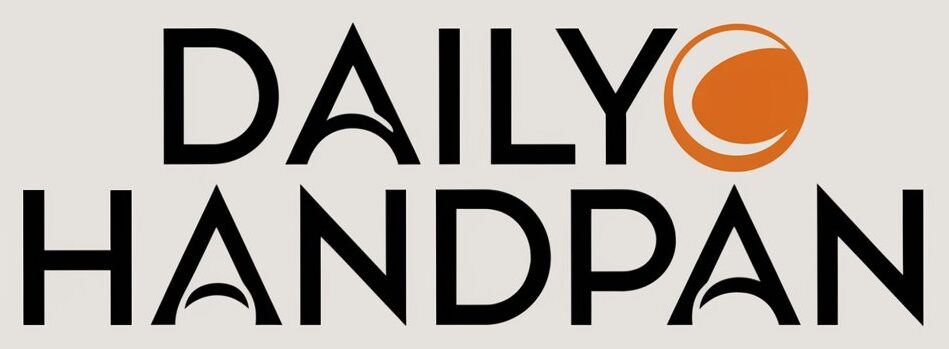The handpan is an extraordinary musical instrument that has captivated the hearts of many with its ethereal and soulful sounds. Originating in the early 21st century, the handpan, also known as a “hang drum,” has a unique design that produces resonant tones, blending percussion with melody. The deep emotional connection that performers can create through handpan music is profound, making it a beloved instrument worldwide. This article delves into the deeply emotional aspects of handpan performances, exploring how and why these sounds resonate so powerfully with listeners.
Historical Context
The handpan was created in Switzerland by Felix Rohner and Sabina Schärer in 2000. They were inspired by a variety of traditional percussion instruments like the steel drum from Trinidad and Tobago. However, the handpan’s creators aimed to achieve a more melodic and harmonic sound, capable of evoking a wide spectrum of emotions. Since its inception, the handpan has evolved, with countless makers around the world crafting their versions, each bringing subtle variations that add to the instrument’s rich and diverse sound palette.
The Structure of the Handpan
The handpan’s distinctive shape contributes significantly to its unique sound. It is typically made from two sheets of steel or other materials, carefully shaped into a convex lens with a central ‘ding’ and tuned ‘tone fields’ arranged around it. Each tone field is meticulously hammered into the surface, each contributing different notes that resonate harmonically with one another. The result is an instrument that the player can intuitively engage with, creating music that is almost otherworldly in its beauty and emotional depth.
Emotional Resonance in Handpan Music
The handpan is often described as having a calming and meditative quality, capable of transporting listeners to a tranquil state of mind. But why does this instrument touch us so deeply?
Firstly, the sound of the handpan is inherently soothing due to its harmonic richness. The instrument produces a variety of overtones and undertones that create a lush, layered sound. This complex harmonic structure can evoke profound emotional responses by activating multiple areas of the brain simultaneously.
Moreover, the tactile nature of handpan playing allows performers to channel their own emotions directly into the music. The instrument is played by striking or tapping the tone fields with the hands, and this direct physical engagement enables musicians to express a wide range of feelings – from joy and serenity to sorrow and introspection. The dynamic interplay between rhythm, melody, and harmony in handpan music invites listeners to embark on an emotional journey, often leading to moments of intense personal reflection.
Handpan Performances and Cultural Significance
Handpan performances often draw on the cultural and musical traditions of various communities, enriching the emotional experience for audiences. Many artists bring their unique cultural backgrounds into their playing styles, incorporating elements from different musical genres such as jazz, classical, folk, and world music. This blending of cultures creates a rich tapestry of sound that resonates on a global scale.
Moreover, the handpan has found its place in various therapeutic settings. Music therapists use the handpan for its soothing qualities, which can help reduce anxiety, alleviate stress, and promote well-being in individuals facing emotional or psychological challenges. The instrument’s ability to connect deeply with listeners’ emotions makes it a powerful tool for healing and transformation.
Notable Handpan Artists
There are several notable handpan artists whose performances have been widely acclaimed for their deep emotional impact. Here are a few:
- Daniel Waples: One of the earliest and most renowned handpan players, known for his captivating performances and ability to evoke deep emotions through his music.
- Yuki Koshimoto: A Japanese handpan artist whose delicate and intricate playing style brings a sense of peace and serenity.
- David Kuckhermann: An accomplished percussionist who incorporates his extensive knowledge of world rhythms into his handpan performances, creating a unique and emotionally resonant sound.
These artists and many others contribute to the growing recognition of the handpan as a significant musical instrument capable of profound emotional expression.
Conclusion
The handpan is more than just an instrument; it is a vessel for emotional expression and connection. Its unique sound and playing style allow musicians to create deeply resonant and immersive musical experiences. The rich harmonic structure of the handpan, combined with the personal touch of hand playing, produces a sound that speaks directly to the heart. As handpan music continues to evolve, its ability to evoke emotions and connect with people on a profound level underscores its significance in the world of music and beyond.
FAQs
1. What is a handpan?
A handpan is a musical instrument made from two convex, hammered steel sheets bonded together. It features a central ‘ding’ and multiple ‘tone fields’ arranged around it, which produce harmonic resonant sounds when struck or tapped by hand.
2. How was the handpan invented?
The handpan was invented around the year 2000 by Swiss instrument makers Felix Rohner and Sabina Schärer. They drew inspiration from various traditional percussion instruments and aimed to create a melodic and harmonic instrument capable of evoking a wide range of emotions.
3. Why does handpan music evoke such deep emotions?
Handpan music evokes deep emotions due to its harmonic richness and the tactile nature of the instrument. The complex overtones and undertones stimulate multiple areas of the brain, while the direct hand-to-instrument engagement allows musicians to express a wide range of feelings, inviting listeners on an emotional journey.
4. Who are some notable handpan artists?
Notable handpan artists include Daniel Waples, Yuki Koshimoto, and David Kuckhermann. These artists are known for their captivating performances and ability to evoke deep emotions through their handpan music.
5. Can handpan music be used for therapeutic purposes?
Yes, handpan music is often used in therapeutic settings due to its soothing qualities. Music therapists use the handpan to help reduce anxiety, alleviate stress, and promote well-being in individuals facing emotional or psychological challenges.





